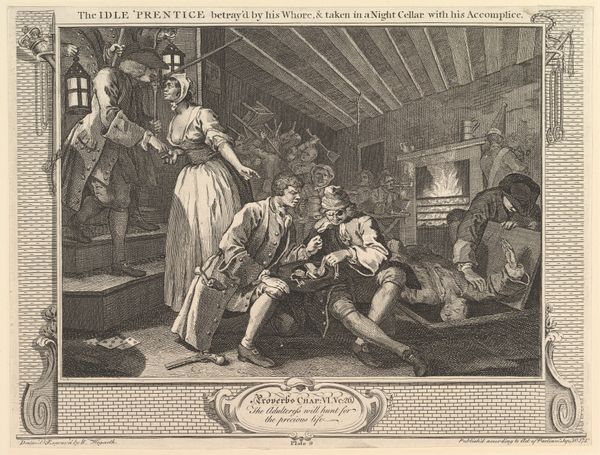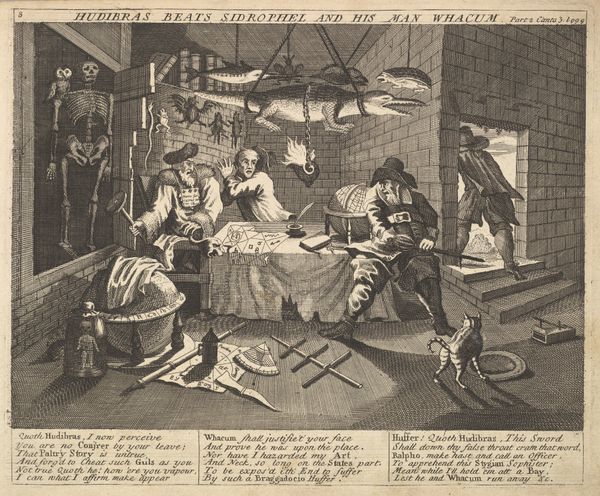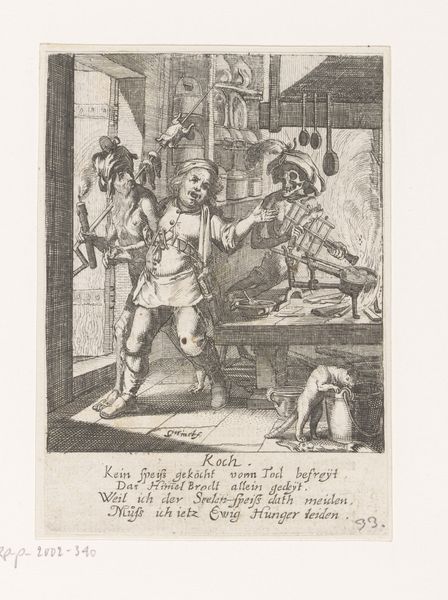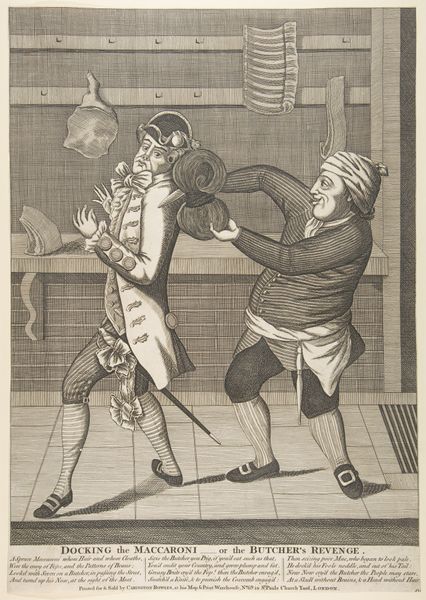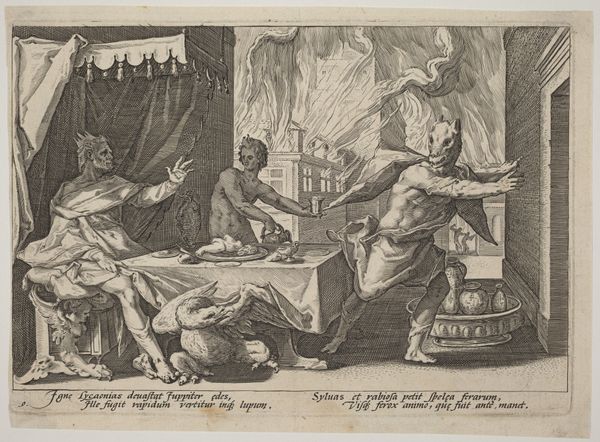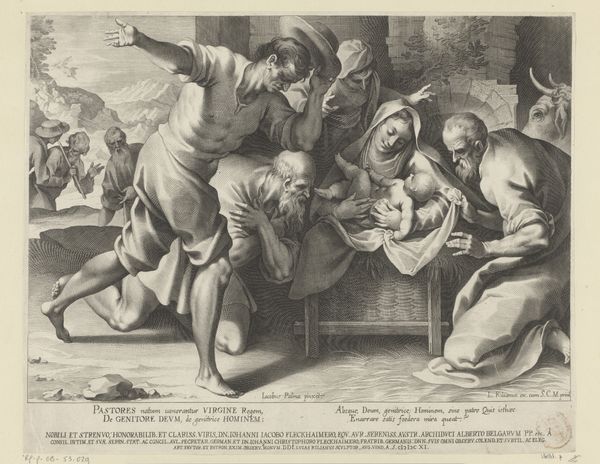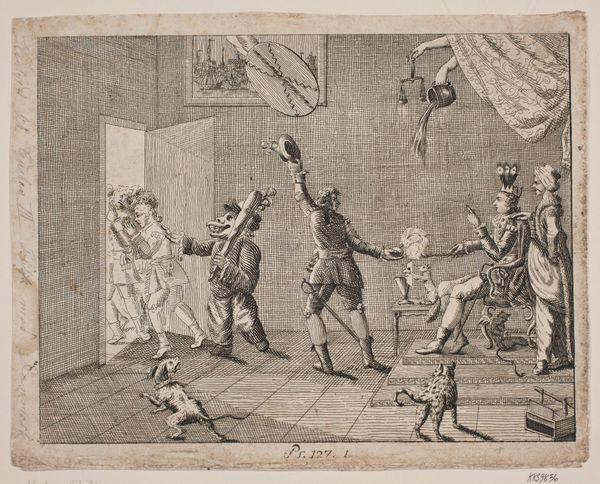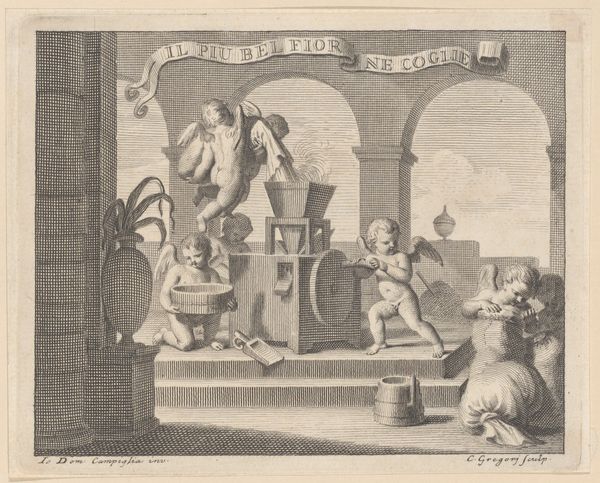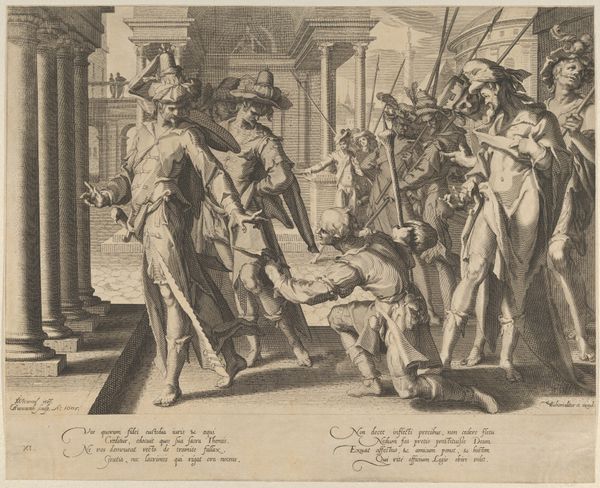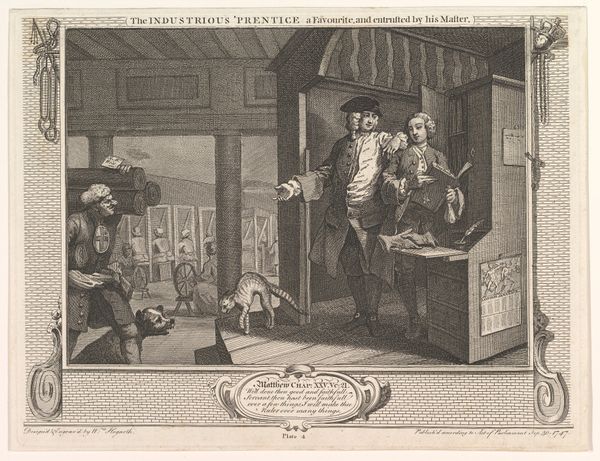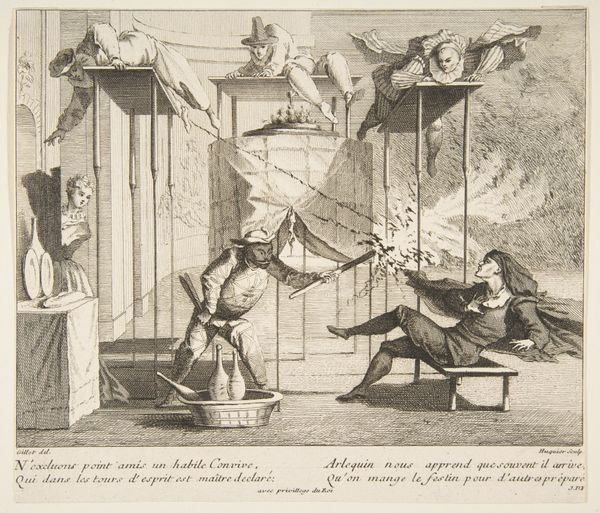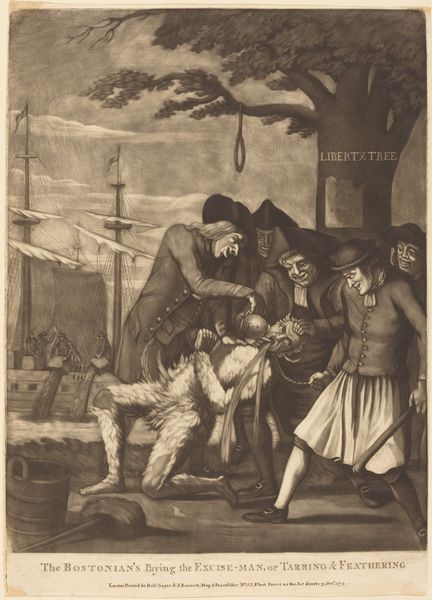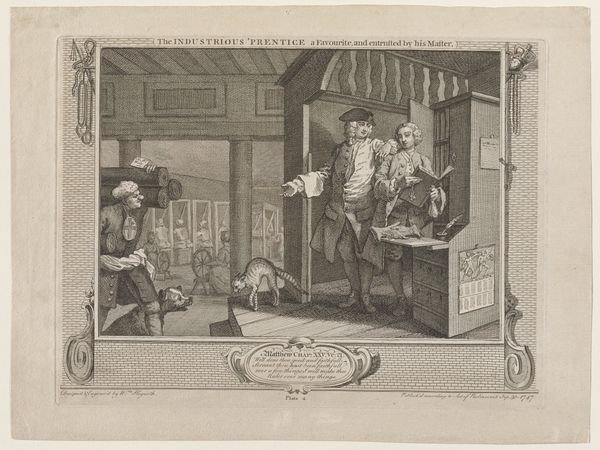
print, etching, engraving
#
baroque
# print
#
etching
#
caricature
#
caricature
#
genre-painting
#
engraving
Dimensions: height 310 mm, width 400 mm
Copyright: Rijks Museum: Open Domain
Curator: This etching, circa 1650, is titled "Spotprent van Spanjaarden en een kok die de duivel vergiftigt," which translates roughly to "Print of Spaniards and a cook poisoning the devil." It’s by an anonymous artist. The materials used here, engraving and etching, provide that characteristically crisp line. Editor: My first impression is one of grotesque humor. The scene is chaotic, with figures seemingly frozen mid-action, creating a sense of heightened, theatrical absurdity. Curator: Indeed. Notice how the etcher uses line weight and cross-hatching to create depth and texture, giving weight to the Spaniards' costumes and defining the dramatic light. The emphasis on materials reveals a critical engagement with the political subject matter through widely circulated printmaking. Editor: And let’s dive into that subject matter. We see Spaniards, identified by their dress, engaged in various states of distress and humiliation. The "cook" is presumably the one responsible. I see the suggestion of gluttony and the distortion of physical forms – note the figure sprawled on the ground with cloven feet exposed – pointing towards devilish allegories. Curator: Precisely. Consider how prints like these served as propaganda, employing accessible materials to spread political sentiment rapidly. The artist clearly crafts an image of Spanish decadence. We're asked to associate these exaggerated, unflattering physical attributes with Spanish corruption and cruelty. Editor: It's all about demonizing the enemy, literally and figuratively. The guitar hanging on the wall, the table littered with objects… these all add layers of meaning. What appears to be a shelf full of oranges hanging up near the ceiling... almost comically threatening. And these objects act as visual cues that resonate with established symbolic meanings in early modern Europe. Curator: By circulating and consuming such caricatures, viewers could collectively reinforce shared cultural prejudices. These materials helped disseminate powerful ideological positions, playing an active role in shaping public opinion during times of conflict. The widespread production facilitated that reach and subsequent societal impact. Editor: Examining this print really highlights the enduring power of symbols in political discourse. The devil, the distorted figures… these tap into archetypal fears and prejudices. Curator: I agree. Considering this piece from the standpoint of production and its accessibility, one grasps its profound ability to engage viewers in this particular moment in history. Editor: For me, it really resonates how the potent blend of familiar imagery and implied meanings shapes public memory. Thanks for discussing it with me!
Comments
No comments
Be the first to comment and join the conversation on the ultimate creative platform.
